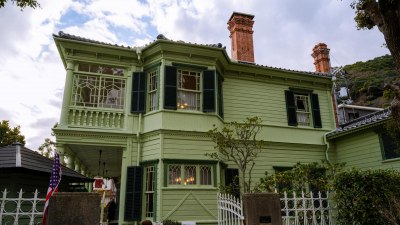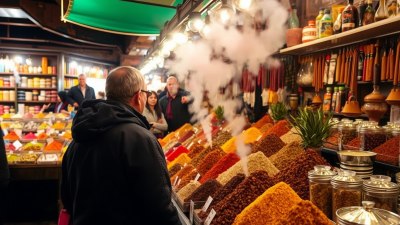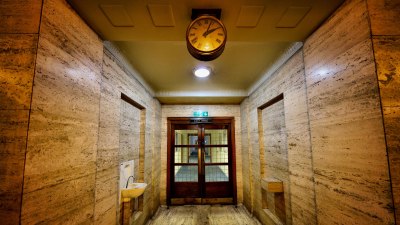Port-au-Prince, Haiti – Markets, Coastal Views & Historic Landmarks
Explore the vibrant markets, stunning coastal views, and historic landmarks of Port-au-Prince, Haiti.

Image by lifeforstock on Freepik
Port-au-Prince, the capital city of Haiti, is a vibrant and bustling metropolis that offers a rich tapestry of culture, history, and scenic beauty. Situated on the picturesque shores of the Caribbean Sea, this city is not just the political and economic heart of the country but also a melting pot of traditions and flavors. Visitors to Port-au-Prince can expect to experience an array of activities, from exploring the vibrant markets to enjoying stunning coastal views and discovering historic landmarks that tell the story of Haiti's past.
One of the first stops for any traveler should be the local markets, where the sights, sounds, and smells of Haiti come alive. The Iron Market, or Marché en Fer, is the most famous market in Port-au-Prince. Originally built in the 19th century, the market was tragically destroyed by a fire in 2008 but has since been rebuilt. The market is a dazzling display of colors and textures, where local vendors sell everything from fresh produce to handmade crafts. The atmosphere is electric, with haggling merchants and lively conversations in Creole French creating a unique shopping experience. Here, you can purchase souvenirs, beautiful handmade bags, vibrant fabrics, and local art, all while supporting local artisans.
Not far from the Iron Market is the vibrant Champ de Mars, a large public square that is perfect for a relaxing afternoon. This park is often filled with locals and tourists alike enjoying picnics, playing games, or simply people-watching. At one end of the park stands the iconic Palais National, or National Palace, which once served as the official residence of the Haitian president. While the palace suffered extensive damage during the 2010 earthquake, the site remains a significant historical landmark and is a prime photo opportunity for visitors.
Coastal Views
Port-au-Prince is blessed with stunning coastal views that make it a desirable destination for nature lovers. The city's picturesque waterfront is lined with palm trees and offers breathtaking views of the Caribbean Sea. A walk along the coast is a must, especially at sunset when the sky is painted with hues of orange and pink, reflecting off the water. For those eager to experience the sea, boat tours are available that take you along the coastline, offering opportunities for swimming, snorkeling, and enjoying the refreshing ocean breeze.
The nearby Pétion-Ville is an upscale neighborhood that offers some of the best panoramic views of the city. A short drive up to the hills reveals breathtaking views of the bay and surrounding mountains, perfect for photography enthusiasts. Additionally, visitors can take a hike in the nearby Parc La Visite, a national park that showcases Haiti’s diverse natural beauty. Trails wind through lush greenery and offer a chance to see native wildlife, cascading waterfalls, and stunning vistas of the island.
Historic Landmarks
Aside from its vibrant markets and coastal beauty, Port-au-Prince is home to several historic landmarks that reflect the country's rich heritage. One of the most significant sites is the Musée du Panthéon National Haïtien (MPNH), which showcases the history and culture of Haiti through exhibits that feature artifacts, artwork, and multimedia presentations. Visitors can learn about important figures in Haitian history, such as Jean-Jacques Dessalines and Toussaint Louverture, who played pivotal roles in the country’s fight for independence.
Another must-see landmark is the Cathedral of Our Lady of the Assumption, an architectural marvel that stands as a testament to Haiti's resilience. Though the cathedral suffered severe damage during the 2010 earthquake, it remains a symbol of hope and faith for the people of Port-au-Prince. The ruins are still captivating, and visitors can witness the ongoing restoration efforts that aim to bring back its former glory. The site offers an insight into the historical significance of religion in Haiti, where Catholicism plays a central role in the lives of many citizens.
For a deeper understanding of the cultural heritage of Haiti, a visit to the Iron Market is essential, not just for its shopping opportunities but for the stories it holds. Originally constructed in 1889, the market was designed by a French architect and served as a center of commerce until its destruction in 2008. The rebuilt structure continues to thrive, serving as a gathering point for the community while showcasing local crafts and food. Engaging with vendors here can provide additional insights into the daily lives of the Haitian people and their resilience in the face of challenges.
Culinary Delights
No visit to Port-au-Prince is complete without indulging in its culinary offerings. The city is bursting with lively restaurants and street food vendors serving delicious Haitian cuisine. Popular dishes include Griot, which is marinated pork fried to perfection, and Pikliz, a spicy slaw made from pickled vegetables that adds a delightful crunch to any meal. Street vendors along the waterfront often serve fresh seafood, making it the perfect place to enjoy a meal while soaking in the ocean views.
Don’t forget to try local drinks such as Racloe, a refreshing sugarcane juice, and Haitian rum, which is renowned for its quality and flavor. Eating out in Port-au-Prince is not just about the food; it’s about the experience of dining in vibrant atmospheres filled with laughter and music.
Cultural Experiences
Diving deeper into the Haitian culture, visitors should consider attending local music events or festivals, which reflect the nation’s rich artistic traditions. Music genres such as Kompa and Rara echo through the streets, offering listeners a joyful soundscape characteristic of Haiti. Various cultural festivals honor the diverse heritage of the nation, celebrating everything from voodoo rituals to the arts. These events provide a fantastic opportunity to engage with locals and learn more about their way of life.
Art plays a significant role in the culture of Port-au-Prince, with local artists showcasing their works in galleries and markets throughout the city. The artistic scene is vibrant, with influences from various styles and traditions that capture the essence of Haitian identity. Visitors can explore art galleries that feature paintings, sculptures, and crafts made from recycled materials, exemplifying the creativity and resourcefulness of the Haitian people. Purchasing a piece of local art not only supports artists but also serves as a beautiful reminder of your trip.
In conclusion, Port-au-Prince is a city filled with life and beauty, waiting to be explored. From its remarkable markets and stunning coastal views to its rich historic landmarks, there is much to discover. Engaging with the local culture through cuisine, music, and art will leave travelers with unforgettable memories. Whether you're wandering through lively streets or enjoying a quiet moment at a scenic overlook, Port-au-Prince offers a unique glimpse into the heart of Haiti.











